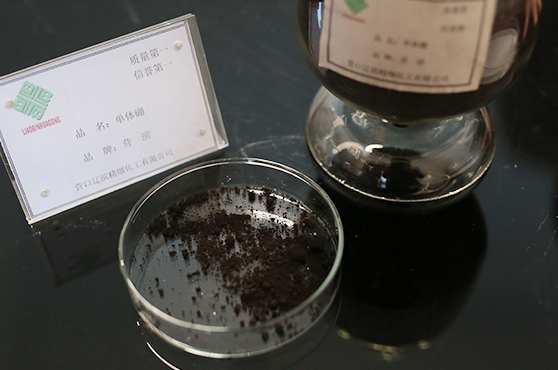Thermally conductive polymer materials have a very wide range of applications in many fields such as aerospace vehicles, electronic packaging, chemical heat exchangers, LEDs, etc., due to their good heat exchange performance.
For thermally conductive polymer materials, improving the thermal conductivity of the material is the key. At present, a simple and effective way to produce thermally conductive polymer materials is to add thermally conductive fillers to the polymer materials. This method can effectively improve the thermal conductivity of the thermally conductive polymer materials, and the process is simple, which is conducive to industrial production.
Metal filler
Adding metal powder to polymers is an effective way to improve the thermal conductivity of materials. In metal crystals, heat conduction is mainly through the directional movement of a large number of free electrons inside. Commonly used metal fillers include silver, copper, aluminum, magnesium, nickel, etc. The metal powder has high thermal conductivity and electrical conductivity at the same time, so that the surface resistance of the made thermally conductive plastic is low and it has high electrical conductivity. In the electronic and electrical fields that require high electrical edge performance, the surface resistance of the parts is relatively high, which is a major defect of metal-filled polymers.
For the thermal conductivity of micron aluminum powder filled epoxy resin, when the volume fraction of aluminum powder filled reaches 40%, the thermal conductivity of the composite material changes suddenly, and the thermal conductivity is 3.5W/(m·K).

Oxide filler
Oxide fillers mainly include aluminum oxide, magnesium oxide, zinc oxide, etc., which have thermal conductivity and excellent electrical edge performance. The oxide filler is mainly used to fill the edge polymer material in a mixed manner with the nitride, so that the thermal conductivity of the material can be improved, the stable electrical performance can be maintained, and the production cost can be reduced.
Alumina
Alumina is a kind of multifunctional inorganic filler, with large thermal conductivity, dielectric constant and better performance. In addition, its price is cheap, so it is widely used as thermally conductive composite filler.
The epoxy resin is filled with alumina as the filler. When the filler volume reaches 60%, the thermal conductivity of the composite material can reach 4.3W/(m·K).
The price of acicular alumina is low, but the filling amount is small. In liquid silica gel, the large amount of ordinary acicular alumina is generally about 300 parts, so the thermal conductivity of the obtained product is limited. However, the filling amount of spherical alumina is large. In liquid silica gel, the large amount of addition can reach 600~800 parts. The thermal conductivity of the obtained product is high, and the price is higher, but it is lower than the price of boron nitride and aluminum nitride.
Magnesium Oxide
Magnesium oxide is white or light yellow powder with good fire resistance. Magnesium oxide is low in price, easy to absorb moisture in the air, strong in viscosity, cannot be filled in large amounts, and has poor acid resistance and is easily corroded by acid, which limits its application in acidic environments.
Polyphenylene sulfide (PPS) is blended and filled with MgO (40~325 mesh) as the thermally conductive filler. It is found that when the filling amount of MgO is 80%, the thermal conductivity of the PPS composite is 3.4W/(m·K), and maintains a relatively high thermal conductivity. Good mechanical properties and electrical edge properties.
Zinc oxide
The particle size and uniformity of zinc oxide are very good, suitable for the production of thermal conductive silicone grease, but its thermal conductivity is low, not suitable for the production of high thermal conductivity products; light weight, thickening, and not suitable for potting.
Nitride filler
Commonly used nitride fillers include aluminum nitride, boron nitride, silicon nitride, etc., which have the advantages of high thermal conductivity, low thermal expansion coefficient, low dielectric constant, etc., and are good fillers due to the thermal conductivity of the system.
Aluminum Nitride
Aluminum nitride is an atomic crystal and belongs to the diamond nitride category. It can exist stably at a high temperature of 2200°C. It has good thermal conductivity and a small thermal expansion coefficient, making it a good thermal shock material. The thermal conductivity of aluminum nitride is close to the thermal conductivity of boron oxide and silicon carbide, and is 5 larger than that of aluminum oxide.
Double-granularity aluminum nitride mixed with epoxy resin was used to study the influence of the addition amount of aluminum nitride particles and gradation filling on the thermal conductivity of the composite material. The mass ratio of particle size 20μm to 3μm is 4/6, and the filling amount is 60%, the thermal conductivity reaches 1.373W/(m·K), which is 30% higher than other products of the same type.
Boron Nitride
Boron nitride is a layered structure of hexagonal crystal system, similar to graphite structure, with higher thermal conductivity, lower coefficient of thermal expansion, excellent thermal stability, and higher oxidation resistance. But its price is very high. Although boron nitride alone can achieve higher thermal conductivity, similar to aluminum nitride, the viscosity of the system rises sharply after a large amount of filling, which limits its application.
Using BN as a thermally conductive filler to fill epoxy resin, because BN itself has a high thermal conductivity, a low dielectric constant and a low thermal expansion coefficient, the resulting composite material has a good comprehensive performance. The thermal conductivity of composites filled with hexagonal BN can reach 2.91W/(m·k), while the thermal conductivity of composites filled with cubic BN can reach 3.95W/(m·k).
Silicon nitride
Silicon nitride has excellent electrical properties, with a thermal conductivity of 180W/(m·K) and high strength. Silicon nitride has two crystal types, α and β, both of which are hexagonal crystal systems. In actual production applications, β-Si3N4 is the main product.
The silicon nitride/epoxy composite material was prepared by casting method, and the effect of particle size and addition amount on thermal conductivity was studied. The results show that when the volume addition of silicon nitride is 30%, the thermal conductivity of the composite material reaches 0.83W/(m·K), and the silane coupling agent treatment improves the thermal conductivity and mechanical properties of the material.
Carbide filler
Carbide fillers are mainly silicon carbide and boron carbide fillers.
Silicon carbide
Silicon carbide is made by high temperature smelting of raw materials such as quartz sand, petroleum coke (or coal coke) and wood chips through a resistance furnace. Silicon carbide has stable chemical properties, and its thermal conductivity is other semiconductor fillers, and its thermal conductivity is even greater than that of metal at high temperatures.
Filling the thermal conductive filler with epoxy resin, SiC particles can promote the curing of epoxy resin, and form a thermal conductive path or thermal network chain in the system to improve the mechanical and thermal conductivity.
Boron carbide
Boron carbide is a refractory and superhard material with high thermal conductivity, but it is expensive, and it is not widely used in polymer materials.
Boron carbide is used as a thermally conductive filler to fill natural rubber materials. It is found that the addition of boron carbide can increase the thermal diffusivity of natural rubber, and the thermal diffusivity of natural rubber is also improved after aging.
Other inorganic non-metallic fillers
Inorganic non-metallic fillers mainly refer to carbon nanotubes, graphite, carbon black and some mineral raw materials.
Carbon nanotubes
Carbon nanotubes are tubular objects wound by a single layer of graphite atoms. They are divided into single-walled carbon nanotubes and multi-walled carbon nanotubes. Due to their high axial thermal conductivity, a small amount of addition in the composite material can achieve obvious thermal conductivity. Rate.
The reinforcement effect of carbon nanotubes on Al2O3/silicone rubber thermally conductive composites was studied, and it was found that with the increase of carbon nanotube fillers, the thermal conductivity of the composites gradually increased, and the presence of carbon nanotubes contributed to the formation of thermal conductive paths for the fillers. It is expected that the carbon nanotubes can form a heat conduction path after being stretched in the system, which can greatly improve the heat conduction efficiency. However, because the carbon nanotubes with the aspect ratio are cut during the blending, the gain effect failed to meet the expectations.
Graphite
Graphite is a layered non-metallic material with a smooth surface, excellent lubricating properties, and a large form factor in the peeled state. Graphite flakes have higher specific strength (strength/density ratio), and excellent electrical and thermal conductivity. And compared with carbon nanotubes, graphite is cheaper.
Flake graphite is used to fill PA6 and PA6//PC systems. After the mass fraction of the filler is 30%, a heat conduction path can be formed to rapidly increase the thermal conductivity and electrical conductivity.
Summary
The rapid development of electronics, aerospace, and other fields has put forward higher requirements for thermally conductive polymer materials. Thermally conductive polymer materials with high thermal conductivity and excellent comprehensive performance are the focus of future research in the field of new materials.

Telephone: 15940764666
Landline: 0417-3902111
Website: www.yklbhg.com
Address: No. 517, Xiangyang Chemical Industry Park, Laobian District, Yingkou City, Liaoning Province
Landline: 0417-3902444
Fax: 0417-3902118
Mail box: 758007001@qq.com
Address: No. 517, Xiangyang Chemical Industry Park, Laobian District, Yingkou City, Liaoning Province
